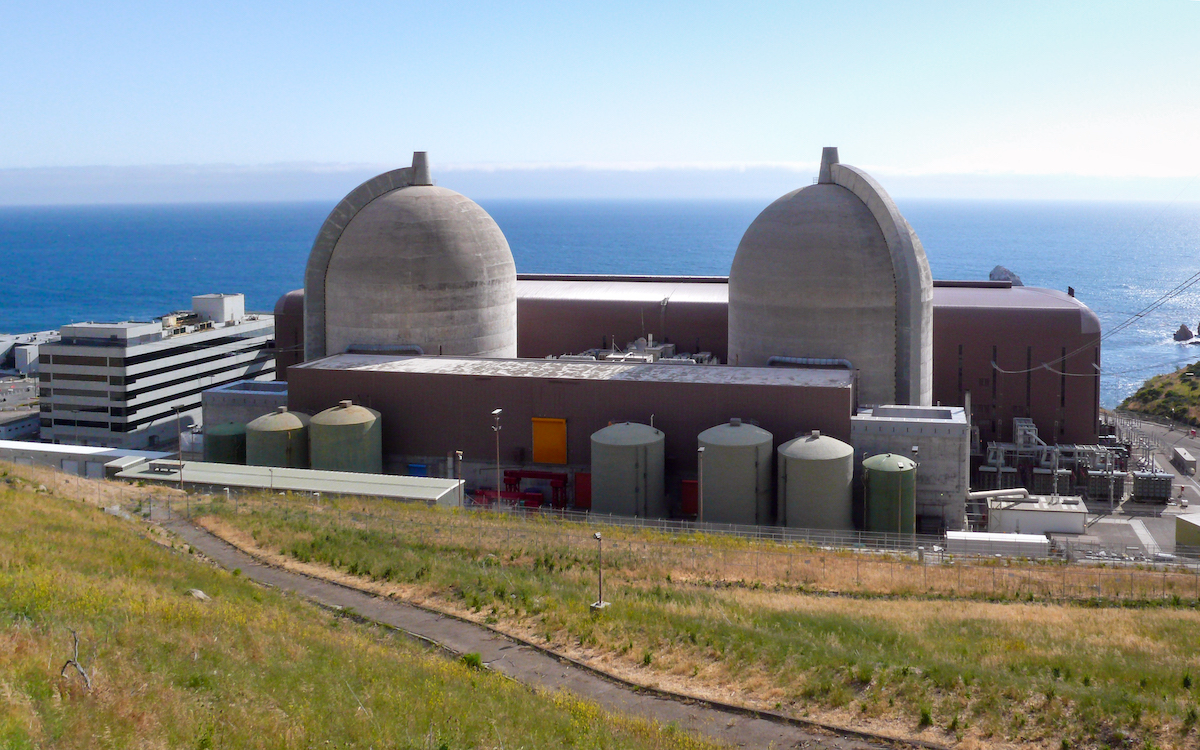Some jokes are too bitter even for irony. Last week, after much arm-twisting, both houses of the state legislature voted overwhelmingly in favor of Governor Gavin Newsom’s last-minute effort to extend the life span of PG&E’s twin domed nuclear power plants at Diablo Canyon by five years. With a slashing heat wave poised to punish California for the indefinite near future, Newsom argued compellingly that without Diablo Canyon’s steady stream of carbon-free electricity — they produce one-ninth of the state’s total electrical output — brownouts and blackouts could wreak havoc on the fifth-largest economy on Planet Earth.
Just three days later — even with the passage of this monumental policy change — 2,300 residents of San Luis Obispo County, home to the Diablo Canyon Plant, experienced a five-hour brownout. Both sides — for and against the bill — claimed the power interruption demonstrated the rightness of their argument. It is all too obvious that the grid-busting threat posed by the convection thermals unleashed by the current heat wave have exposed the vulnerabilities of the state’s electrical grid.
Lobbying was intense on all sides. Although the bill — SB 826 — would sail through with 101 aye votes and only four against (16, including Santa Barbara’s State Senator Monique Limón, would abstain), the environmental opposition exacted some concessions. The license for the Avila Beach facility was for only five years, not the 10 years that Governor Newsom first proposed. (For proponents such as Santa Barbara Congressmember Salud Carbajal, supporting the massive wind energy project now under consideration off the coast of Morro Bay, that’s significant.)
Under the revised plan, the California Coastal Commission would have some limited permitting authority; initially, there had been no room for any such oversight. And lastly, the Governor agreed to throw in $1 billion in additional funding for solar power and other non-carbon-based forms of energy. (That brought the total of such investments approved in the last day of this year’s legislative session to $54 billion.)
What still remains is the $1.4 billion forgivable loan the State of California will extend to PG&E to secure the permits necessary to extend its licenses with the federal Nuclear Regulatory Commission to the years 2024 and 2025. This loan, however, will be paid out in phases. If PG&E fails to secure any portion of the $6 billion the federal government seems intent on setting aside to keep the plant humming, then the state would cut its losses. Critics of the bill contend that those federal funds are eligible only to power plants suffering financial hardship; Diablo Canyon, they insist, does not meet that requirement.
In the face of intense opposition and the prospect of staggering environmental mitigation costs, PG&E had negotiated a deal with a coalition of environmental organizations in 2016, agreeing not to seek license renewal. Shortly thereafter, the state legislature would ratify this deal. Last week’s action changes all that.
Legislators representing the Central Coast have been emphatically ambiguous in their reaction to the bill. Congressmember Carbajal is wary of anything that might intrude upon the Morro Bay wind project. The shorter-term license extension, Carbajal stated, helps do that. Still, he voiced concerns. “But the right decision in a crisis, if made without adequate outreach and thought, can still be a wrong one,” he stated. Since Newsom first floated the idea in April, Carbajal pushed the governor to reach out far more than he had to the San Luis Obispo community. Newsom’s outreach, Carbajal said, had improved since then, but he added that many key decisions remain to be made before the plant can be relicensed. “I have made it clear that consistent outreach to the Central Coast,” he said, “was necessary.”
State Senator Monique Limón did not vote for or against the bill but rather chose to abstain. Limón expressed pride that her involvement prior to the vote led to improvements to the bill, but she said the final draft does not fully address her concerns related to safety and ratepayers. The final bill, she said, did not guarantee reliability and allowed “a level of shareholder profit” that caused her pause. “I have concerns about the storage of spent nuclear waste,” she said, “and the proximity of the plant to four seismic fault lines and limited ratepayer protections.”
Assemblymember Steve Bennett voted for the bill but expressed reservations of his own in an interview two weeks before the vote. Bennett was not happy that the state failed to push for the production of alternative green energy sources as soon as it knew Diablo Canyon was going offline. But as a practical matter, he understood the outcome was a foregone conclusion. Supply-chain issues have slowed down the transition from traditional carbon-based energy sources to alternative sources. In that context, Bennett said he would push to maximize the use of hydrogen technology as a vehicle to store solar and wind energy during peak use hours — typically the early evening when the sun has gone down.
Support the Santa Barbara Independent through a long-term or a single contribution.




